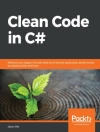Breathe deep and relax – this book takes the stress out of photography post-production
While capturing the perfect photograph is a welcome creative challenge for photographers, post-production can often be a headache. Downloading, sorting, tagging, editing, and distributing your digital images – especially the enormous quantities produced in today’s image-happy world – can be overwhelming. Time to take a deep breath and sit down with a copy of this calming book. Digital worksflow teacher and author Mark Fitzgerald offers low-stress, post-production photography workflows and editing solutions that will make your life easier.
Walking you through the latest photography software, especially Adobe Lightroom and Adobe Photoshop, Mark offers sensible advice and answers all your post-production questions, whether you’re a professional photographer, serious amateur, or motivated novice.
- Takes the stress out of photography post-production by offering effective, timesaving, no-hassle solutions for overworked digital photographers
- Helps you streamline and simplify such post-production tasks as downloading, sorting, tagging, editing, and distributing digital images
- Explores the latest photography software, with special emphasis on Adobe Lightroom and Adobe Photoshop
- Offers straightforward advice for professional photographers and serious amateurs
- Includes practical, real-world examples, so you can immediately apply what you’re learning
Get into a better, more relaxing place with your photography post-production workflows and tasks with Zen of Post Production: Stress-Free Photography Workflow and Editing.
विषयसूची
Introduction xix
About me xix
What’s in this book? xx
Who should read this book? xxi
Getting the most from this book xxi
Conventions used in this book xxi
Products mentioned in this book xxii
Getting into the flow xxii
Please review this book xxii
Chapter 1: Getting Grounded 3
What Is Workflow? 3
Comparing Lightroom and Photoshop 4
Deconstructing Photoshop 5
Pixels versus metadata 6
Adobe Lightroom is born 7
Finding the Balance of Power 8
Solving Problems 10
Chapter 2: Finding Comfort with Lightroom 15
Lightroom as Your Personal Photo Lab 15
Working with Catalogs 16
Finding your catalog 17
It’s like the catalog at your public library 17
The most important thing to know about Lightroom 18
How many catalogs should you have? 19
Working with RAW Files 20
Comparing JPEG to RAW 20
RAW is like a time machine 21
Proprietary RAW file formats and DNG 21
Preparing Lightroom 22
Setting up preferences 23
Choosing your catalog settings 25
Exploring the Lightroom Screen 26
Viewing Photos 28
Gaining more real estate 28
Four primary viewing methods 28
Zooming and panning 29
Chapter 3: Importing Photos in Lightroom 33
Simplifying Folder Organization 33
Avoiding the ‘Bucket System’ 33
Organizing and naming folders 35
Understanding Previews 36
Determining the best preview size 37
Smart previews 38
Adding Ownership Information during Import 38
Working with the Import Screen 40
Importing all photos with the Add option 40
Import method 41
Importing new photos 44
Chapter 4: Organizing Your Visual Life 49
Seeing More Information 49
Working with thumbnails 49
Setting up Loupe view 52
Moving, Renaming, and Deleting Photos 52
Moving folders and files 52
Renaming folders and files 54
Deleting photos 54
Deleting folders 55
Sorting for Winners and Losers 55
Playing Red Light, Green Light 56
Other Ways to Filter Photos 60
Doing a text search 60
Filtering for image attributes 61
Performing searches based on metadata 61
The ‘secret’ Attribute filter bar 62
Grouping Photos in Collections 63
A collection is like a playlist 63
Understanding the Collections panel 63
Using collections 64
Using smart collections 66
Finding Missing Photos 66
Locating individual photos 66
Synchronizing folders 67
Seeing the World with the Map Module 69
Adding photos to the map 70
Concerns about location metadata 70
Controlling reverse geocoding 70
Chapter 5: Using Keywords to Find Anything Any Time 73
A Word Is Worth a Thousand Pictures 73
Applying Keywords using the Keywording Panel 74
Using Keyword Tags 75
Using Keyword Suggestions 76
Using Keyword Set 77
Searching for Keywords 78
Performing single-keyword searches 78
Performing multikeyword searches 79
Saving a custom filter preset 80
Managing Your Keyword List 81
Organizing keywords 81
Dealing with ‘ghost’ keywords 83
Keywording the Past 84
Final Words on Keywording 85
Chapter 6: Adjusting Basic Color and Tone 89
Exploring the Develop Module 89
Adjusting Color with White Balance 90
Understanding white balance 91
Adjusting white balance 92
Synchronizing Develop Settings 97
Understanding Histograms 97
Fine-Tuning Tone with the Basic Panel 99
Understanding the controls 100
Tonal adjustment in action 101
Pump Up the Color with Vibrance and Saturation 106
Comparing Different Editing Versions 106
Using Before & After Views 107
Going back in time with the History panel 108
Zen of Postproduction Stress-Free Photography Workflow and Editing Exploring Your Options with Virtual Copies and Snapshots 108
Working with virtual copies 110
Taking a snapshot 111
Chapter 7: Advanced Color and Tone Adjustments 113
Using the Tone Curve Panel to Modify Midtone Contrast 113
Understanding the Tone Curve panel 113
Using the Tone Curve sliders 115
The Targeted Adjustment tool 116
Previewing a panel’s adjustments 116
Customizing Color with the HSL Panel 117
Understanding the HSL panel 117
Using the HSL sliders 117
Using the Targeted Adjustment tool 118
Getting creative with the HSL panel 119
Working with Black-and-White 120
Adding Color Effects with the Split Toning Panel 124
Split-toning color photos 124
Toning black-and-white photos 125
Using Develop Presets to Apply Editing Formulas 126
Understanding Develop presets 126
Creating custom presets 128
Exporting and importing Develop presets 129
Chapter 8: Mastering Lightroom’s Develop Tools 133
The Importance of Cropping 133
Understanding the Crop Overlay tool 135
Working with aspect ratio 136
Straightening photos 137
Retouching with the Spot Removal Tool 138
Understanding the Spot Removal tool 138
Removing dust spots 141
Clone versus Heal 141
Retouching larger objects 142
Removing Red Eye 143
Adding Dimension with the Filter Tools 143
Using the Graduated Filter tool 143
Using the Radial Filter tool 147
Using the Adjustment Brush Tool 149
Controlling the brush 150
Burning and dodging with the Adjustment Brush tool 151
Smoothing skin with Auto Mask 154
Chapter 9: Going Deeper with the Develop Module 157
Working with Camera Profiles 157
Creating custom camera profiles 160
Changing Lightroom’s default camera profile 162
Using the Lens Corrections Panel 163
Working with lens profiles 163
Removing color fringing 164
Manually adjusting geometry 165
Using the Upright adjustments 168
Managing Sharpness and Noise with the Detail panel 170
Adjusting sharpness 171
Reducing noise 173
Adding Finishing Touches with the Effects Panel 175
Applying a vignette 175
Adding grain 178
Chapter 10: Traveling between Lightroom and Photoshop 181Opening RAW Files in Photoshop 181
Setting up Lightroom’s External Editing preferences 182
Opening RAW files from Lightroom in Photoshop 184
Opening non-RAW files in Photoshop with Lightroom 187
Saving Files in Photoshop 188
Resolving Metadata Conflicts 188
Choosing the Right Path 190
Choosing the right time 191
Choosing the right settings 191
Workflow for editing original non-RAW files 192
Chapter 11: Understanding the Photoshop Way 195
Understanding Photoshop CC 195
Exploring the Photoshop Landscape 197
Working with Panels 199
Setting up Preferences 201
General preferences 201
Interface preferences 201
Sync Settings preferences 202
File Handling preferences 203
Performance preferences 205
Cursors preferences 207
Camera Raw preferences 208
Managing Color Spaces 210
Zooming and Panning Photos 213
Zooming 213
Panning 214
Chapter 12: Using Layers for a Nondestructive Workflow 217
Understanding Layers 217
Types of Photoshop layers 218
Working with the Layers Panel 221
Adjustment Layers for Lightroom Users 222
Fine-tuning color with Hue/Saturation 223
Adjusting tone with Curves 226
Using Layer Masks to Get the Most Power from Adjustment Layers 228
Black conceals, white reveals 228
Using the Brush tool with a mask 230
A Simple Masking Workflow 233
Fine-tuning a mask with the Properties panel 234
Saving Edited Files 236
Using Save 236
Using Save As 237
Chapter 13: Using Selections to Create Complex Masks 241
Following the ‘Marching Ants’ 241
Using Intelligent Selection Tools to Simplify Selecting 243
The Magnetic Lasso tool 243
The Magic Wand tool 247
Adding to and subtracting from a selection 249
The Quick Selection tool 251
Which selection tool is the best? 254
Converting a Selection to a Mask 254
Using Refine Mask 255
View Mode 255
Edge Detection 257
Adjust Edge 260
Output 260
A Masking Case Study 261
Chapter 14: Perfecting Your Photos with Retouching 267
What Is Retouching? 267
Understanding Photoshop’s Retouching Tools 269
Literal retouching with the Clone Stamp tool 269
The Healing Brush tool 272
Using the Clone Source panel 274
Using the Patch Tool to Retouch with a Selection 276
A Retouching Case Study 280
Automated Retouching with Content-Aware Features 286
Using Content-Aware Fill 286
Using Content-Aware Move 288
Chapter 15: Expanding Your Horizons with Plugins 291
Working with Plugins in Lightroom 292
Installing plugins 293
Editing HDR with Photomatix Pro 296
What is HDR? 296
Using Photomatix Pro 296
Exploring the Nik Collection by Google 299
Color Efex Pro 299
Dfine 301
HDR Efex Pro 2 301
Sharpener Pro 3 301
Silver Efex Pro 2 303
Viveza 2 304
On One Perfect Photo Suite 7 304
Perfect B&W 304
Perfect Effects 4 304
Perfect Layers 3 305
Perfect Mask 5 306
Perfect Portrait 2 306
Perfect Resize 7 306
Focal Point 2 307
Topaz Labs 308
Photo FXlab 309
Topaz Adjust 5 309
Other Topaz Labs Plugins 309
Summing up Plugins 311
Chapter 16: Exporting and Printing Your Photos 315
Creating Custom Watermarks 315
Text Options panel 316
Watermark Effects panel 317
Saving and updating watermarks 317
Exporting Photos from Lightroom 318
Using the Export dialog box 318
Exporting for e-mail and web 323
Exporting for the photo lab 327
Previewing Output Color with Soft Proofing 328
Soft-proofing for web 330
Soft-proofing for inkjet printing 331
Inkjet Printing with Lightroom 333
Exploring the Print module 335
Making a fine-art print 336
Saving a JPEG file instead of printing 342
Overview of the inkjet printing workflow 343
Chapter 17: Sharing Your Photos with the World 347
Using Lightroom’s Publish Services 347
Setting up a new publish service 348
Using a publish service 350
Designing Photo Books 351
Book Settings 354
Auto Layout 355
Page 355
Other panels 355
Creating Slideshows 356
Options 358
Layout 358
Overlays 358
Backdrop 360
Titles 360
Playback 361
Adding custom text 362
Playing and saving your slideshow 364
Building Web Galleries 365
Flash galleries versus HTML galleries 365
Site Info 367
Color Palette 368
Appearance 368
Image Info 369
Output Settings 369
Upload Settings 370
Index 373
लेखक के बारे में
Mark Fitzgerald is a highly sought-after teacher known for his clear and easy-to-understand presentation style. Over the last ten years Mark has helped countless photographers tame their workflows, enabling them to focus their energies on the creative aspects of their photography. Mark is an Adobe Certified Photoshop Expert and the owner of The Digital Darkroom in Portland, Oregon.












